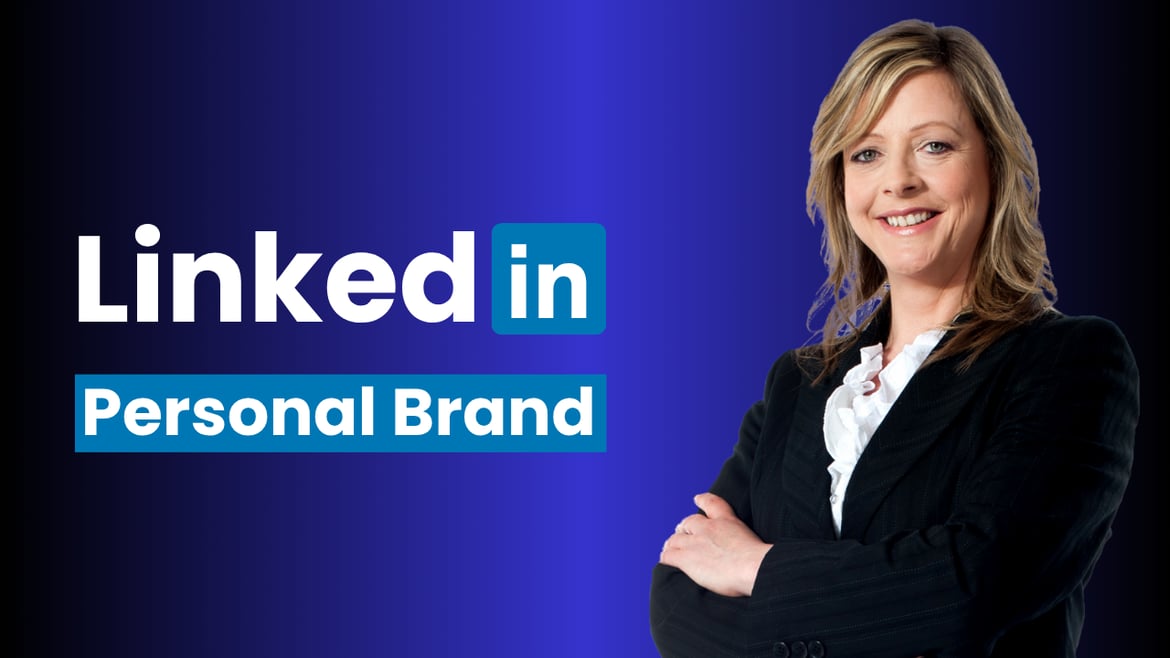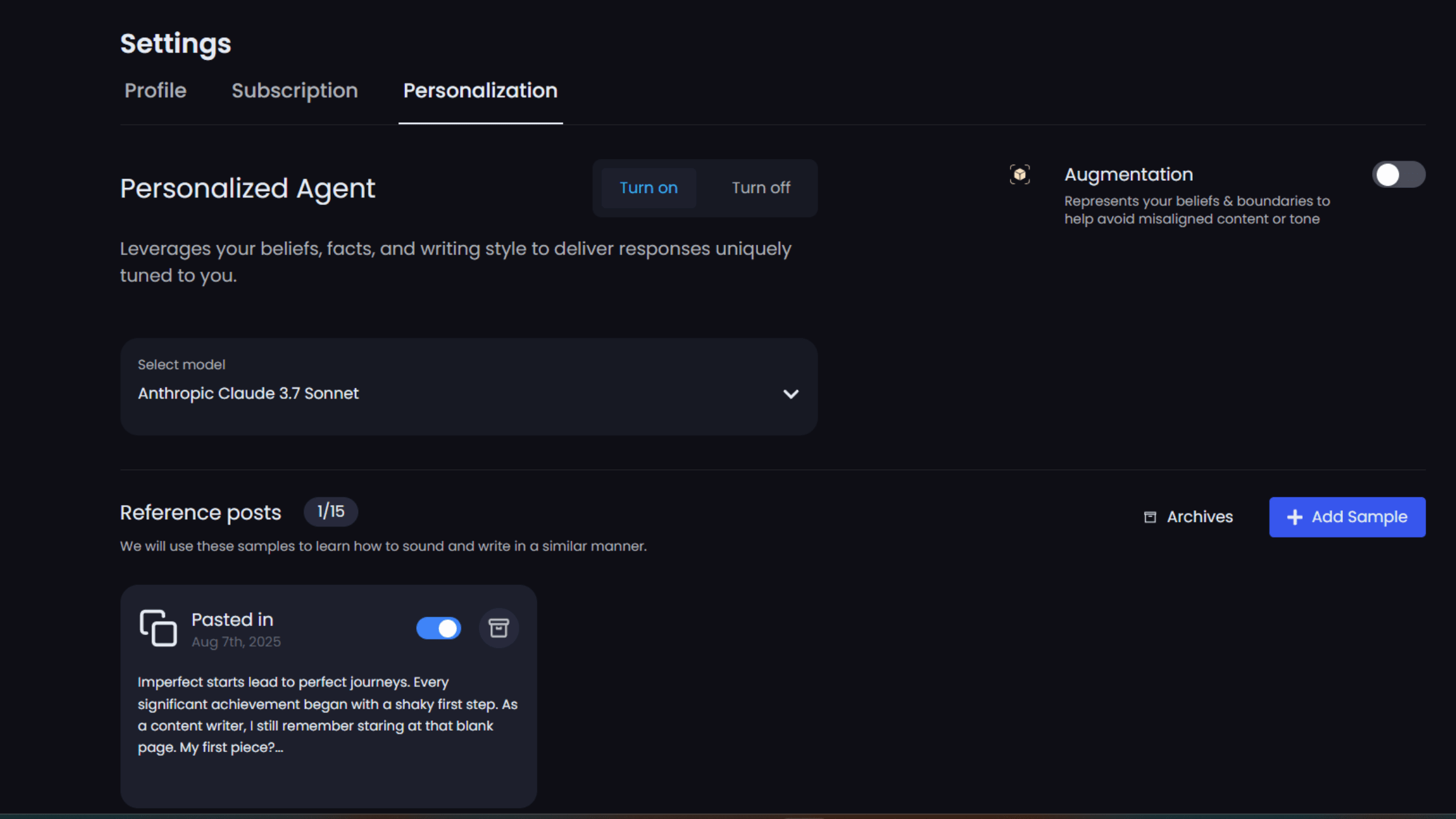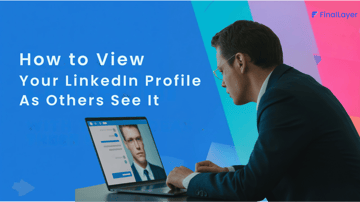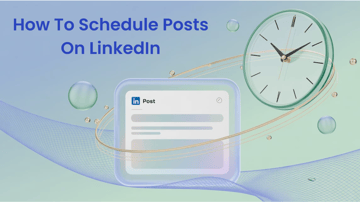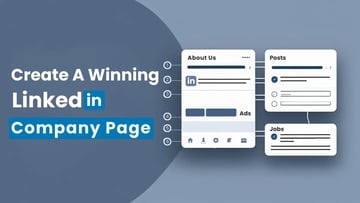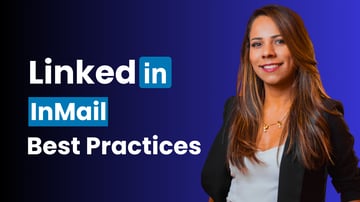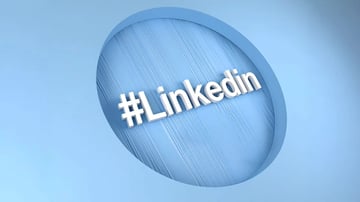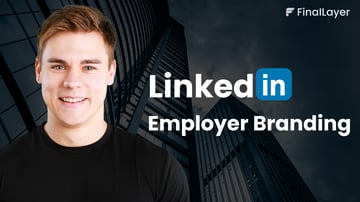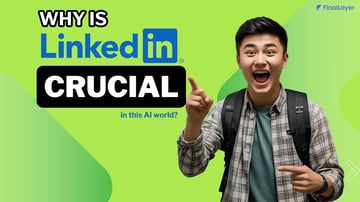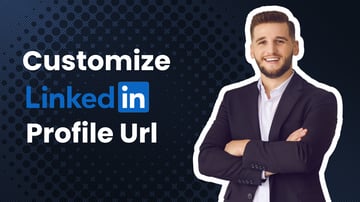Your LinkedIn profile receives views every day, but how many turn into real business opportunities? With 900 million professionals competing for attention, generic networking approaches no longer work.
The professionals who build powerful personal brands on LinkedIn follow specific strategies most people never discover. They understand that success comes from strategic positioning, systematic content creation, and targeted networking, not random posting or connection requests.
This comprehensive guide reveals the proven frameworks that will change your LinkedIn profiles into lead-generation machines. You'll discover research-driven content strategies, the psychology behind memorable personal branding, and networking systems that create lasting professional relationships.
These are battle-tested approaches that help professionals build thought leadership, attract ideal clients, and establish industry authority. Everything outlined here works because it's based on unique experiences and authentic value delivery that competitors simply cannot replicate.
Understanding Personal Brand Fundamentals
What is Personal Branding on LinkedIn?
Personal branding on LinkedIn is the strategic process of defining and communicating your unique professional identity to build trust, authority, and recognition within your industry. It encompasses everything from your profile optimization to your content strategy and networking approach.
When someone searches for expertise in your field, your brand determines whether they remember you, trust you, and ultimately choose to work with you.
The Five Personal Levers Framework
Building a successful LinkedIn personal brand requires a systematic approach. The foundation rests on five key personal levers that work together to create a compelling professional presence. This framework ensures your brand development is data-driven rather than guesswork.
These five levers include your unique insights, educational content, message reinforcement, network expansion, and personality integration. Each lever builds on the others to create a memorable professional presence that stands out in your industry.
Understanding how to extract unique insights from your personal experiences, problems you've solved, failures you've overcome, and industry perspectives you've developed becomes crucial for authentic content creation. This approach ensures your content can't be replicated by competitors or AI because it's rooted in your specific professional journey.
Share your insights about the topic by creating a LinkedIn post
What are the 5 personal levers that build powerful LinkedIn brands?
You will have a chance to edit later
Strategic Brand Positioning for LinkedIn Success
Defining Your Professional Position
Brand positioning on LinkedIn involves helping your professional network remember you for something specific while giving them clear understanding of your unique value proposition. This strategic process requires thorough market analysis and competitor research to identify gaps and opportunities in your professional space.
For example, instead of being "another marketing consultant," you might position yourself as "the marketing strategist who helps B2B SaaS companies reduce customer acquisition costs by 40% through content-driven lead generation." This positioning immediately communicates your target market, specialty, and measurable outcome.
The key steps include identifying your target professional audience, analyzing competitor professionals in your field, conducting market research within your industry, uncovering differentiation opportunities, and crafting your unique positioning statement.
Many professionals struggle with positioning because they try to appeal to everyone. The most successful LinkedIn personal brands focus on specific audiences with specific problems, making their value proposition crystal clear to the right people.
Creating Your Value Proposition
Your LinkedIn value proposition should clearly communicate the specific benefits you bring to your professional network. This involves addressing your audience's main professional challenges while demonstrating measurable outcomes and unique approaches that set you apart from peers in your field.
A strong value proposition answers three critical questions: What problem do you solve? How do you solve it differently? What results can people expect when working with you?
Consider a financial advisor whose value proposition might be: "I help busy executives build wealth without spending hours managing investments by creating automated portfolio strategies that have delivered 12% average annual returns over five years."
This statement identifies the target audience (busy executives), the problem (no time for investment management), the unique solution (automated strategies), and the proven result (12% returns).
Target Audience Development and Research
Understanding Your LinkedIn Audience
Effective LinkedIn personal branding starts with crystal-clear audience understanding. Your target audience comprises the specific professionals most likely to benefit from your expertise, hire your services, or collaborate on projects. This includes potential clients, industry peers, recruiters, and thought leaders in your space.
Many professionals make the mistake of trying to appeal to everyone on LinkedIn. This dilutes your message and makes it impossible to create content that truly resonates. Instead, focus on 2-3 specific audience segments that align with your professional goals.
For instance, a cybersecurity consultant might target three specific audiences: IT directors at mid-size companies, compliance officers in regulated industries, and fellow cybersecurity professionals building their expertise.
The Research Phase: Building Content Foundations
Instead of struggling with content ideas later, invest time upfront in comprehensive audience research. This research phase builds your content foundations using proven, data-driven insights that will transform your content effectiveness.
Focus on understanding professional pain points and challenges, industry trends and developments, preferred content formats and topics, engagement patterns and behaviors, and decision-making processes within your target market.
For example, if you're targeting marketing directors, your research might reveal they struggle with proving ROI, staying current with digital marketing trends, managing tight budgets, and coordinating cross-functional teams. This insight directly informs your content strategy.
Content Strategy and Pillar Development
Establishing Your Content Pillars
Content pillars provide the organizational framework for your LinkedIn strategy, streamlining both content creation and audience engagement. Effective pillars should align with your expertise while addressing audience needs consistently.
Most successful LinkedIn personal brands focus on 3-5 core content pillars. For example, a sales leadership consultant might use these pillars: sales team management strategies, prospecting and lead generation techniques, sales technology and tools, industry trends and insights, and personal leadership development.
Each pillar should connect to your overall brand message while providing different angles to demonstrate your expertise. This approach prevents your content from becoming repetitive while ensuring everything supports your positioning.
The Three-Purpose Content Framework
Every LinkedIn post should serve one specific purpose within your personal brand strategy. The framework focuses on helping your audience see, trust, and remember your unique value through three distinct content types.
Educational Content: Cutting Through the Noise
Educational content establishes your expertise by breaking down complex industry topics into simple frameworks, sharing step-by-step processes from your professional experience, debunking common myths and misconceptions, and providing actionable insights and best practices.
For example, instead of posting "Sales is important," share "The 3-step qualification framework that increased our close rate from 15% to 32% in six months." This provides specific, actionable value your audience can immediately implement.
Trust-Building Content: Providing Social Proof
Trust-building content includes sharing specific client results with real numbers and outcomes, documenting your professional journey and lessons learned, showing behind-the-scenes glimpses of your work process, and highlighting testimonials and case studies.
Memorable Content: Reinforcing Your Message
Memorable content focuses on 3-5 core topics consistently, uses various formats to present similar concepts, incorporates personal stories and experiences, and develops signature frameworks and methodologies.
Visual Brand Identity and Voice Development
Creating Visual Consistency
Your visual brand identity encompasses all graphic elements that represent your professional brand on LinkedIn. This includes your profile photo, banner image, post graphics, and overall aesthetic consistency. Strong visual branding helps establish recognition and professionalism while reinforcing your core brand values.
Consider a business coach who uses consistent colors (navy blue and gold), professional fonts, and clean design elements across all LinkedIn content. This visual consistency makes their content instantly recognizable in the LinkedIn feed, even before followers read the name.
Your profile photo should be professional, high-quality, and reflect your industry standards. Your banner image should communicate your value proposition visually and include key information about your expertise or services.
Developing Your Brand Voice and Personality
While brand voice and brand personality are often used interchangeably, there's an important distinction. Your brand personality includes the overall attributes and characteristics of your professional brand, while your voice specifically refers to the tone, mood, and style of your communication and messaging on LinkedIn.
For example, your brand personality might be "approachable expert," while your voice might be "conversational yet authoritative, using simple language to explain complex concepts, with occasional humor to maintain engagement."
Your voice should remain consistent across all LinkedIn interactions, from posts and comments to direct messages and connection requests. This consistency builds familiarity and trust with your professional network.
Struggling to maintain a consistent professional voice across LinkedIn posts? The FinalLayer LinkedIn Super Agent determines your professional brand personality and voice, and represents you consistently across all LinkedIn posts. Try FinalLayer now.
Thought Leadership and Authority Building
Establishing Thought Leadership Position
Thought leadership on LinkedIn means your thinking influences how others in your industry approach leadership and decision-making. Developing effective thought leadership requires a unique perspective combined with valuable insights that change how your audience thinks about industry challenges.
True thought leadership goes beyond sharing industry news or popular opinions. It involves presenting original ideas, challenging conventional wisdom, predicting industry trends, and providing frameworks that others adopt and reference.
For example, a marketing executive who develops and shares the "Revenue Attribution Matrix" that helps companies track marketing ROI across multiple touchpoints becomes a thought leader because they've created something valuable and unique that others want to use.
Framework Development for Authority
Creating proprietary frameworks and methodologies helps establish your expertise while providing valuable tools for your audience. Focus on developing unique approaches to common industry problems, backed by your experience and results.
Your frameworks should be simple enough to understand but sophisticated enough to provide real value. They should also be memorable and shareable, helping expand your reach as others reference your work.
Consider naming your frameworks with memorable titles that become associated with your brand. This creates intellectual property that establishes your authority and generates ongoing recognition.
Networking Strategy: The 30-15-5 Rule
Strategic Network Building
The 30-15-5 networking rule provides a systematic approach to LinkedIn network expansion that moves beyond random connection requests to strategic relationship building.
30 Industry Peers: Identify and follow 30 professionals at your level who share similar target audiences. These connections help expand your reach within your professional community while providing collaboration opportunities and industry insights.
15 Industry Influencers: Connect with 15 established thought leaders who attract audiences similar to yours. Their networks often contain your ideal connections, and engaging with their content exposes you to relevant professionals.
5 Ideal Clients: Follow 5 active profiles of decision-makers who represent your target client or collaboration opportunities. These are the highest-value connections for your business development efforts.
Active Engagement Strategy
Don't follow these profiles passively. Engage with their content daily through meaningful comments, shares, and interactions. This approach works because you're getting exposed to your target audience, building relevant professional relationships, and staying top-of-mind within your industry.
When commenting on posts, provide thoughtful insights rather than generic responses like "Great post!" Share relevant experiences, ask meaningful questions, or add additional perspectives that advance the conversation.
For example, if an industry leader posts about customer retention challenges, instead of commenting "So true!", you might write: "This aligns with what we've seen in our B2B clients. The companies with the highest retention rates invested in onboarding automation early. Have you found specific onboarding touchpoints that make the biggest difference?"
This type of engagement positions you as a knowledgeable peer while providing value to the broader conversation, increasing the likelihood that others will check out your profile and connect with you.
Brand Messaging and Communication Frameworks
Developing Consistent Messaging
Your LinkedIn messaging should consistently communicate your core value proposition across all touchpoints. This means your profile headline, about section, post content, and comments should all reinforce the same key messages about your expertise and unique value.
Effective messaging frameworks help ensure every interaction reinforces your professional positioning while providing clear, compelling reasons for your audience to engage with your content.
For example, a project management consultant might use messaging that consistently emphasizes "helping teams deliver projects 30% faster through systematic process optimization." This message appears in their headline, about section, and regular content, creating strong brand recall.
Storytelling for Professional Impact
Professional storytelling on LinkedIn requires structure and purpose. Effective stories should be entertaining, believable, educational, relatable, organized, and memorable. Use the four-piece narrative structure: People (characters), Place (context), Problem (challenge), and Purpose (resolution with call-to-action).
Stories work because they help your audience visualize themselves in similar situations and understand how your expertise might help them. They also make your content more engaging and memorable than pure informational posts.
For instance, instead of posting "Communication is important in project management," share a story: "Three months into a major software implementation, our client's project was 6 weeks behind schedule. The development team was frustrated, stakeholders were demanding updates, and everyone was pointing fingers. Here's what we discovered during our first meeting..." Then explain the communication framework you implemented and the results achieved.
Implementation and Time Management
Daily LinkedIn Routine
Effective LinkedIn personal branding doesn't require constant posting or hours of daily engagement. Instead, focus on consistent, strategic activities that build your brand systematically.
30-Minute Lunch Block: Dedicate this time to posting content and initial audience engagement. This includes publishing your planned content, responding to early comments, and engaging with a few posts from your strategic network list.
15-Minute Evening Session: Continue engaging with your strategic network list and respond to comments on your posts. This ensures ongoing conversation and relationship building without overwhelming your schedule.
This 45-minute daily investment consistently implemented produces better results than sporadic hours-long LinkedIn sessions because it maintains steady visibility and engagement with your professional network.
Content Planning and Consistency
Rather than posting daily, focus on reinforcing your main message from multiple angles. Pick 3-5 core topics and stick to them consistently while incorporating different formats to present similar ideas.
For example, if one of your core topics is "leadership development," you might share it as a case study on Monday, an actionable framework on Wednesday, and a personal story on Friday. Each post reinforces your expertise in leadership while providing varied value to your audience.
Planning content in advance ensures consistency and reduces the daily pressure of deciding what to post. Create content themes for each day of the week or develop monthly content calendars that align with your business goals.
Personality Integration and Differentiation
Adding Unique Personality Hints
Personality hints are memorable elements that make your brand instantly recognizable beyond your professional content. These strategic choices help create familiarity and recognition while making your brand more relatable and human.
Examples include consistent visual elements like coffee cups in photos, signature phrases or expressions that become associated with your brand, unique perspectives or approaches to common industry topics, and personal interests that relate to business lessons.
For instance, a productivity consultant who always includes coffee in their photos and relates productivity tips to coffee brewing creates a memorable association. Their audience begins to think of them whenever they see coffee-related content, strengthening brand recall.
Creating Memorable Brand DNA
Your personality hints should feel authentic while serving strategic purposes. They help create emotional connections with your audience and make your content more relatable and memorable than purely professional posts.
The key is choosing personality elements that align with your professional brand and audience expectations. A financial advisor might share hiking photos with lessons about long-term planning, while a tech consultant might reference cooking analogies to explain complex software concepts.
These elements should enhance rather than distract from your professional message, creating a well-rounded personal brand that people remember and want to work with.
Crisis Management and Reputation Protection
Proactive Reputation Management
Even strong personal brands can face challenges, from misunderstood posts to industry controversies. Developing strategies for crisis management and reputation rebuilding ensures long-term brand protection.
Proactive reputation management includes maintaining consistent positive content that reinforces your expertise, addressing issues transparently and professionally when they arise, and implementing internal communication strategies to coordinate responses when necessary.
The best defense against reputation challenges is a strong foundation of valuable content and positive professional relationships that provide context for your character and expertise.
Recovery and Rebuilding Strategies
When reputation challenges arise, focus on genuine responses that acknowledge concerns while maintaining your professional standards. Continue delivering value through your content and expertise, demonstrating your commitment to your audience and profession.
Strategic content creation during challenging periods should reinforce your professional expertise and integrity without directly addressing controversies unless necessary. Let your work and value speak for your character.
Measuring Success and Optimization
Key Performance Indicators
Track metrics that align with your professional goals rather than vanity metrics that don't drive business results. Important KPIs include profile views and connection growth, content engagement rates and reach, lead generation and opportunity creation, speaking and collaboration invitations, and industry recognition and mentions.
For example, if your goal is business development, track how many qualified leads your LinkedIn activity generates monthly. If you're building thought leadership, monitor speaking invitations, media mentions, and requests for expert commentary.
Continuous Improvement
Regular analysis of your LinkedIn performance helps identify successful content types, optimal posting times, and audience preferences. Use these insights to refine your strategy and maximize your personal brand impact.
Monthly reviews of your LinkedIn analytics reveal patterns in audience engagement, content performance, and network growth that inform strategic adjustments to your personal branding approach.
Advanced Strategies and Scaling
Leveraging LinkedIn Features
Maximize LinkedIn's native features including LinkedIn articles for long-form thought leadership content, polls for audience engagement and insights, events for community building and lead generation, and newsletters for consistent audience communication.
Each feature serves different purposes in your personal branding strategy and helps expand your reach beyond regular posts.
Integration with Broader Marketing Strategy
Your LinkedIn personal brand should complement your overall professional marketing strategy, whether you're building a consultancy, advancing your career, or establishing thought leadership in your industry.
Integration might include driving LinkedIn connections to email lists, using LinkedIn content to support speaking engagements, or leveraging LinkedIn relationships for partnership opportunities.
Conclusion
Building a successful LinkedIn personal brand requires strategic thinking, consistent execution, and authentic value delivery. The frameworks outlined in this guide provide a systematic approach to creating a memorable professional presence that generates leads, builds authority, and opens new opportunities.
Remember that effective personal branding is a long-term investment, not a quick fix. Focus on providing consistent value while staying true to your unique professional identity. Start with thorough audience research, develop clear positioning, create valuable content consistently, and engage strategically with your professional network.
The professionals who succeed on LinkedIn understand that personal branding isn't about self-promotion—it's about serving your audience so well that they remember you when opportunities arise. Your LinkedIn personal brand is your professional legacy. Invest in it strategically, nurture it consistently, and watch as it transforms your career and business opportunities.
Success comes from combining strategic frameworks with authentic value delivery. The systematic approach outlined here, research, positioning, content creation, networking, and authentic personality integration, creates sustainable competitive advantages that compound over time.
Your unique experiences, insights, and perspectives are your greatest assets in building a memorable LinkedIn personal brand. Use them strategically, share them generously, and let them guide your professional brand development journey.
